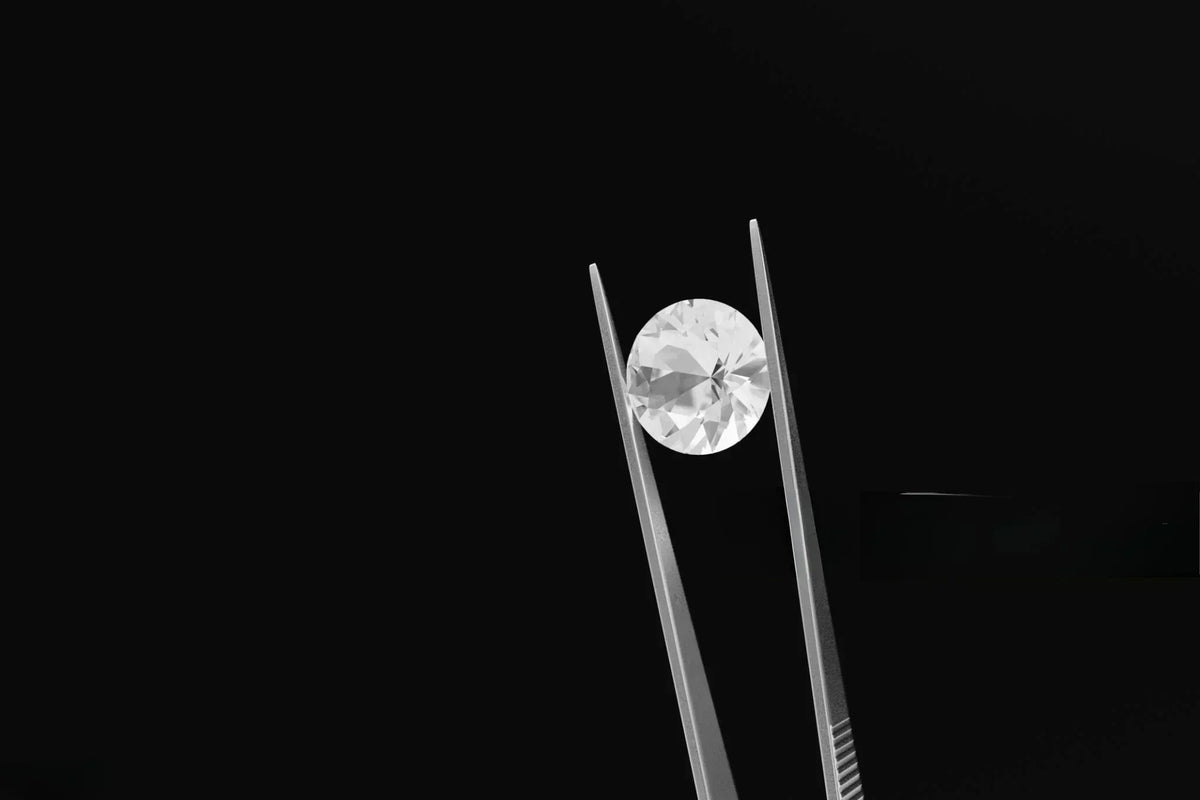Share your articles with us and get published! Reach out at hello@friendlyturtle.com.
A Breakthrough in Sustainable Luxury: Why Lab-Created Diamonds Are Eco-Friendly

According to a recent study by Unilever, 33% of consumers purchase products from eco-friendly and environmentally beneficial firms. According to the survey, although 78% of US and 53% of UK consumers say they feel better when they purchase sustainably produced goods, that number rises to 88% in India and 85% in Brazil and Turkey.
The interesting thing is that the diamond industry is no exception.
The mined diamond business has recently generated controversy owing to its environmental impact. The reckless and unregulated mining of diamonds has been shown to terribly affect the ecosystem and this is putting many people off.
The most obvious consequences of diamond mining include carbon emissions, land degradation, deforestation, and air and water pollution.
Even fast fashion jewelry, which is inexpensive and has a shorter lifespan, produces a significant impact and trash that harms the environment.
Labgrown diamonds pave the way for sustainable living in the diamond sector. This is because laboratory-grown diamonds are more environmentally friendly.
Some apparent reasons include its low environmental effect, reduced waste, and regulated waste disposal, making it a more environmentally friendly option to diamonds mined from the Earth.
Reasons lab-grown diamonds are eco-friendly
1. Lab-grown diamonds don’t destroy the Earth
Lab-created diamonds are not extracted or mined from the ground. Instead, they are developed using technological methods in laboratories. Lab-grown diamonds, also known as eco-friendly diamonds, are generated ethically and have no direct or indirect environmental impact.
Diamond mining has caused irrevocable damage to the Earth. According to reports, mining a 1.0-carat diamond requires over 1750 tons of dirt. While some diamond mining businesses follow environmental rehabilitation laws to ensure the area is filled back up, restoring the pit to its previous state is theoretically impossible.
Other regions have no regulations; hence, the pits are left open.
Diamond mining, unless adequately regulated, causes land disturbance. Mining causes vast amounts of waste rock, sand, and dirt to accumulate in the surrounding areas. This garbage needs to be properly managed and rehabilitated.
A number of unregulated and illicit diamond mines fail to handle it, resulting in land degradation and imbalance.
Marine and coastal mining have resulted in large-scale excavations and changes to coastal environments. Eco-friendly diamonds, on the other hand, are created in labs with no environmental impact.
Diamonds made in laboratories are developed in safe conditions that adhere to environmental regulations.
2. Lab-grown diamonds don’t cause air or water pollution
Unlike mined diamonds, laboratory-created diamonds do not pollute the air or water. Lab-grown diamonds, often eco-friendly diamonds, are generated in miniature diamond-growing chambers in safe laboratories. They generate a small quantity of garbage.
The garbage these labs create is recycled and disposed of in environmentally friendly ways. Diamond-growing laboratories produce tiny amounts of energy and pollution.
When diamonds are extracted from mines in various ways, substances from the soil are released. When these chemicals escape into bodies of water, they damage the atmosphere and contaminate the water.
Diamond mining uses electricity and hydrocarbon energy, which releases carbon emissions, greenhouse gasses, and chemical compounds into the atmosphere. This has resulted in smog, climate change, and various environmental issues.
According to a comparative analysis by Frost & Sullivan, mined diamonds emit 57,000 grams of harmful carbon per carat. On the other hand, grown diamonds produce only 0.028 grams per carat. From the figures, you can’t even compare the amount of damage made by mined diamonds.
3. Lab-grown diamonds spend little energy
Tiny diamond seeds are placed in carbon-rich growing chambers to produce laboratory-grown diamonds. They are formed atom by atom over time with heat and pressure. The entire process is designed to produce genuine natural and synthetic diamonds in the most ecologically responsible way possible.
These laboratories are safe places that adhere to the laws and regulations of manufacturing. The only energy required to grow eco-friendly diamonds in laboratories is a small quantity of electricity.
This electricity is mainly derived from renewable sources. Unlike mined diamonds, eco-friendly diamonds are grown in a lab without chemicals, water, or other damaging materials.
Lab-grown diamonds are better for the environment than mined diamonds. When diamonds are mined from the Earth, two types of energy are used in considerable quantities: electricity and hydrocarbons, which produce significant carbon dioxide and greenhouse gases.
The mining process involves using large amounts of water, chemicals, and toxic compounds.
4. Lab-grown diamonds are more sustainable
The demand for diamonds has only increased. Diamonds have become increasingly popular due to population growth, increased purchasing power, investment opportunities, and consumerist attitudes.
Experts believe that the demand for mined diamonds will soon outweigh availability. The solution to this problem is lab-created genuine diamonds. The production capacity of lab-created diamonds is under human control.
Unlike mined diamonds, which take billions of years to form, lab-grown diamonds can be manufactured quickly and in enormous quantities.
This has a favorable impact on the sustainability of the diamond industry and the environment as a whole.
The new generation is environmentally sensitive. People in most regions want to know how their items are made and whether they are environmentally friendly. Lab-grown diamonds are the only way to ensure a sustainable diamond industry.
5. Lab-grown diamonds are grown in a safe environment
Most lab-grown diamond firms exist because they care about the environmental impact. They aim to reduce environmental impact while providing clients with environmentally sustainable genuine diamonds. Manufacturers of lab-created diamonds understand how their products protect the environment.
Due to this, the manufacturers ensure that the diamonds are made in the safest environment possible.
Parting shop
These are just a few reasons why many people consider lab-grown diamonds highly eco-friendly. To get the most from the diamonds, buy them from a reputable company. Before making the purchase, confirm the way that they are made. You need to ensure that they are made in the eco-friendliest way possible.
Once you get the diamonds, take good care of them. This calls for you to store them safely at all times. You also should know when to put them on and when to remove them.
0 comments
Let customers speak for us
Blog posts
For many of us, the day begins with a fresh brew, but our coffee routine is tied to a global supply chain that affects people, forests, water, and climate. This EcoBlog guide breaks down what “sustainable coffee” really means: supporting smallholder farmers, choosing roasters with transparent sourcing, and looking for credible standards such as Fairtrade, Rainforest Alliance, and organic certification (while staying alert to greenwashing). You’ll learn why climate change is already reshaping growing regions, why fair pay matters, and how models that return value to farming communities can help create long-term resilience. We also share easy, low-waste brewing upgrades buy whole beans in bulk, pick reusable methods like a French press or pour-over, compost your grounds, and carry a reusable cup for takeaways. At Friendly Turtle EcoBlog, we love practical sustainability: small daily choices that add up to real impact, without losing the joy of your morning coffee.
Party invites can pile up in the same week, and outfit stress follows fast. This guide shows how to style sustainable holiday looks without buying a brand-new wardrobe: start with one reliable base (a slip dress, tailored trousers, or a knit set), then shift the vibe with layers, shoes, and one statement accessory. You’ll also learn which fabrics tend to wear better through long nights (think cotton velvet, wool blends, lyocell/viscose, and fully lined sequins), plus simple checks that make secondhand finds feel “new” again. For bigger sparkle moments, rental, swaps, and pre-loved shopping keep the fun while cutting waste. We also cover low-waste beauty and smarter care routines (airing, gentle washes, and sensible storage) so party pieces stay in rotation for next season. For more planet-friendly styling ideas and everyday eco living, explore the Friendly Turtle EcoBlog.



